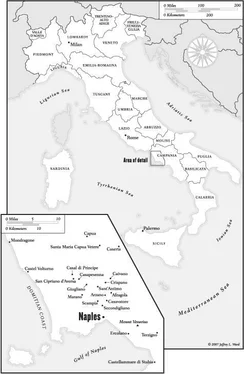Roberto Saviano - Gomorrah - A Personal Journey into the Violent International Empire of Naples’ Organized Crime System
Здесь есть возможность читать онлайн «Roberto Saviano - Gomorrah - A Personal Journey into the Violent International Empire of Naples’ Organized Crime System» весь текст электронной книги совершенно бесплатно (целиком полную версию без сокращений). В некоторых случаях можно слушать аудио, скачать через торрент в формате fb2 и присутствует краткое содержание. Жанр: Старинная литература, на английском языке. Описание произведения, (предисловие) а так же отзывы посетителей доступны на портале библиотеки ЛибКат.
- Название:Gomorrah: A Personal Journey into the Violent International Empire of Naples’ Organized Crime System
- Автор:
- Жанр:
- Год:неизвестен
- ISBN:нет данных
- Рейтинг книги:5 / 5. Голосов: 1
-
Избранное:Добавить в избранное
- Отзывы:
-
Ваша оценка:
- 100
- 1
- 2
- 3
- 4
- 5
Gomorrah: A Personal Journey into the Violent International Empire of Naples’ Organized Crime System: краткое содержание, описание и аннотация
Предлагаем к чтению аннотацию, описание, краткое содержание или предисловие (зависит от того, что написал сам автор книги «Gomorrah: A Personal Journey into the Violent International Empire of Naples’ Organized Crime System»). Если вы не нашли необходимую информацию о книге — напишите в комментариях, мы постараемся отыскать её.
Gomorrah: A Personal Journey into the Violent International Empire of Naples’ Organized Crime System — читать онлайн бесплатно полную книгу (весь текст) целиком
Ниже представлен текст книги, разбитый по страницам. Система сохранения места последней прочитанной страницы, позволяет с удобством читать онлайн бесплатно книгу «Gomorrah: A Personal Journey into the Violent International Empire of Naples’ Organized Crime System», без необходимости каждый раз заново искать на чём Вы остановились. Поставьте закладку, и сможете в любой момент перейти на страницу, на которой закончили чтение.
Интервал:
Закладка:
The clans affiliated with the Secondigliano Alliance—the Licciardi, Contini, Mallardo, Lo Russo, Bocchetti, Stabile, Prestieri, and Bosti families, as well as the more autonomous Sarno and Di Lauro families—make up the Directory, whose territory includes Secondigliano, Scampia, Piscinola, Chiaiano, Miano, San Pietro a Patierno, as well as Giugliano and Ponticelli. As the Directory’s federal structure offered greater autonomy to the clans, the more organic structure of the Alliance ultimately crumbled. The Directory’s production board included businessmen from Casoria, Arzano, and Melito, who ran companies such as Valent, Vip Moda, Vocos, and Vitec, makers of imitation Valentino, Ferré, Versace, and Armani sold all over the world. A 2004 inquiry, coordinated by Naples DDA prosecutor Filippo Beatrice, uncovered the Camorra’s vast economic empire. It all started with a small detail, one of those little things that could have passed unnoticed: a clothing store in Chemnitz, Germany, hired a Secondigliano boss. A rather unusual choice. It turned out he actually owned the store, which was registered under a false name. From this lead, followed by wiretaps and state witnesses, the Naples DDA reconstructed each link in the Secondigliano clans’ production and commercial chain.
They set up shop everywhere. In Germany they had stores and warehouses in Hamburg, Dortmund, and Frankfurt, and in Berlin there were two Laudano shops. In Spain they were in Barcelona and Madrid; in Brussels; in Vienna; and in Portugal in Oporto and Boavista. They had a jacket shop in London and stores in Dublin, Amsterdam, Finland, Denmark, Sarajevo, and Belgrade. The Secondigliano clans also crossed the Atlantic, investing in Canada, the United States, even in South America. The American network was immense; millions of jeans were sold in shops in New York, Miami Beach, New Jersey, and Chicago, and they virtually monopolized the market in Florida. American retailers and shopping-center owners wanted to deal exclusively with Secondigliano brokers; haute couture garments from big-name designers at reasonable prices meant that crowds of customers would flock to their shopping centers and malls. The names on the labels were perfect.
A matrix for printing Versace’s signature Medusa’s head was found in a lab on the outskirts of Naples. In Secondigliano word spread that the American market was dominated by Directory clothes, making it easier for young people eager to go to America and become salespeople. They were inspired by the success of Vip Moda, whose jeans filled Texas stores, where they were passed off as Valentino.
Business spread to the southern hemisphere as well. A boutique in Five Dock, New South Wales, became one of Australia’s hottest addresses for elegant clothing, and there were also shops and warehouses in Sydney. The Secondigliano clans dominated the clothing market in Brazil—in Rio de Janeiro and São Paulo. They had plans to open a store for American and European tourists in Cuba, and they’d been investing in Saudi Arabia and North Africa for a while. The distribution mechanism the Directory had put in place was based on warehouses—that’s how they’re referred to in the wiretappings—veritable clearing stations for people and merchandise, depots for every kind of clothing. The warehouses were the center of a commercial hub, the place where agents picked up the merchandise to be distributed to the clans’ stores or other retailers. It was an old concept, that of the magliari, the Neapolitan traveling salesmen; after the Second World War they invaded half the planet, eating up the miles lugging their bags stuffed with socks, shirts, and jackets. Applying their age-old mercantile experience on a larger scale, the magliari became full-fledged commercial agents who could sell anywhere and everywhere, from neighborhood markets to malls, from parking lots to gas stations. The best of them made a qualitative leap, selling large lots of clothing directly to retailers. According to investigations, some businessmen organized the distribution of fakes, offering logistical support to the sales reps, the magliari. They paid travel and hotel expenses in advance, provided vans and cars, and guaranteed legal assistance in the case of arrest or confiscation of merchandise. And of course they pocketed the earnings. A business with an annual turnover of about 300 million euros per family.
The Italian labels started to protest against the Secondigliano cartels’ huge fake market only after the DDA uncovered the entire operation. Before that, they had no plans for a negative publicity campaign, never filed charges, or divulged to the press the harmful workings of the illegal production. It is difficult to comprehend why the brands never took a stand against the clans, but there are probably many reasons. Denouncing them would have meant forgoing once and for all their cheap labor sources in Campania and Puglia. The clans would have closed down access to the clothing factories around Naples and hindered relations with those in Eastern Europe and Asia. And given the vast number of shopping centers operated directly by the clans, denouncing them would have jeopardized thousands of retail sales contacts. In many places the families handle transportation and agents, so fingering them would have meant a sudden rise in distribution costs. Besides, the clans weren’t ruining the brands’ image, but simply taking advantage of their advertising and symbolic charisma. The garments they turned out were not inferior and didn’t disgrace the brands’ quality or design image. Not only did the clans not create any symbolic competition with the designer labels, they actually helped promote products whose market price made them prohibitive to the general public. In short, the clans were promoting the brand. If hardly anyone wears a label’s clothes, if they’re seen only on live mannequins on the runway, the market slowly dies and the prestige of the name declines. What’s more, the Neapolitan factories produced counterfeit garments in sizes that the designer labels, for the sake of their image, do not make. But the clans certainly weren’t going to trouble themselves about image when there was a profit to be made. Through the true fake business and income from drug trafficking, the Secondigliano clans acquired stores and shopping centers where genuine articles were increasingly mixed in with the fakes, thus erasing any distinction. In a way the System sustained the legal fashion empire in a moment of crisis; by taking advantage of sharply rising prices, it continued to promote Italian-made goods throughout the world, earning exponential sums.
The Secondigliano clans realized that their vast international distribution and sales network was their greatest asset, even stronger than drug trafficking. Narcotics and clothing often moved along the same routes. The System’s entrepreneurial energies were also invested in technology, however. Investigations in 2004 revealed that the clans use their commercial networks to import Chinese high-tech products for European distribution. Europe had the form—the brand, the fame, and the advertising—and China the content—the actual product, cheap labor, and inexpensive materials. The System brought the two together, winning out all around. Aware that the economy was on the brink, the clans targeted Chinese industrial zones already manufacturing for big Western companies; in this they followed the pattern of businesses that first invested in southern Italy’s urban sprawl and then gradually shifted to China. They got the idea of ordering batches of high-tech products to resell on the European market, obviously with a fake brand name that would increase desirability. But they were cautious; as with a batch of cocaine, they first tested the quality of the products the Chinese factories sold them. After confirming their market validity, they launched one of the most prosperous intercontinental dealings in criminal history. Digital cameras, video cameras, and power tools: drills, grinders, pneumatic hammers, planes, and sanders, all marketed as Bosch, Hammer, or Hilti. When the Secondigliano boss Paolo Di Lauro started doing business with China, he was ten years ahead of the initiative of Confindustria, the Italian Manufacturers’ Association, to improve business ties with Asia. The Di Lauro clan sold thousands of Canons and Hitachis on the East European market. Thanks to Camorra imports, items that were once the prerogative of the upper-middle class were now accessible to a broader public. To guarantee a stronger entry into the market, the clans offered practically the identical product, slapping the brand name on at the end.
Читать дальшеИнтервал:
Закладка:
Похожие книги на «Gomorrah: A Personal Journey into the Violent International Empire of Naples’ Organized Crime System»
Представляем Вашему вниманию похожие книги на «Gomorrah: A Personal Journey into the Violent International Empire of Naples’ Organized Crime System» списком для выбора. Мы отобрали схожую по названию и смыслу литературу в надежде предоставить читателям больше вариантов отыскать новые, интересные, ещё непрочитанные произведения.
Обсуждение, отзывы о книге «Gomorrah: A Personal Journey into the Violent International Empire of Naples’ Organized Crime System» и просто собственные мнения читателей. Оставьте ваши комментарии, напишите, что Вы думаете о произведении, его смысле или главных героях. Укажите что конкретно понравилось, а что нет, и почему Вы так считаете.












